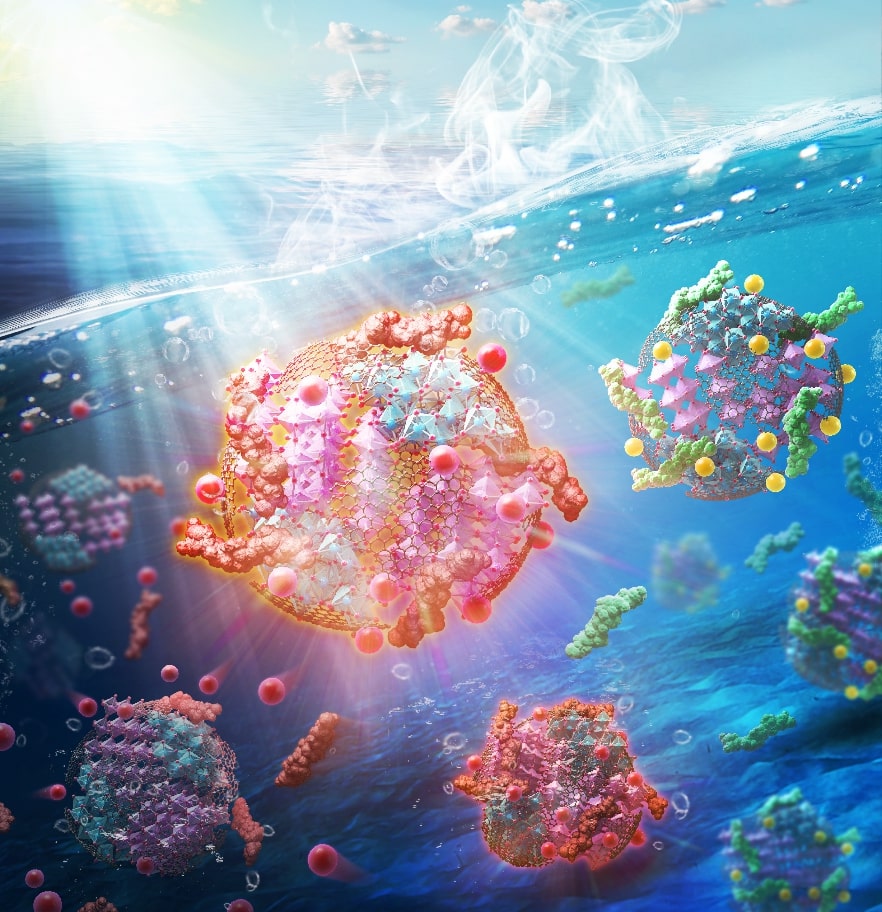RESEARCH NEWS - A Multifunctional Composite Catalyst for Sustainable Wastewater Remediation
Category:News|Publishing : March 24, 2025
Reliable access to clean water is a basic human right and a central objective of the United Nations' Sustainable Development Goals. Thus, securing technologies that can remove pollutants from water bodies is an essential step toward sustainability. Among several existing methods, harnessing solar energy represents an attractive option for water remediation without increasing carbon emissions.
Many photocatalysts are currently being explored for degrading water pollutants via solar-driven reactions. Photothermal evaporation, on the other hand, uses solar energy to rapidly evaporate polluted water and condense it into fresh water. Unfortunately, photocatalytic and photothermal water remediation technologies tend to rely on expensive materials that are challenging to synthesize and implement at large scales, necessitating the development of a single, and inexpensive composite material.
In a recent study, a research team comprising Dr. KATO Kunihiko, Dr. XIN Yunzi, and Mr. XU Yuping, all from the Nagoya Institute of Technology (NITech), Japan, led by Associate Professor SHIRAI Takashi also from NITech, developed a novel method to synthesize multifunctional composite particles. These particles can single-handedly accomplish many essential functions for water remediation. Their study was made available online on October 1, 2024, and was published in Volume 16, Issue 4 of ACS Applied Materials & Interfaces on December 4, 2024.
The researchers employed a planetary ball mill and optimized the milling parameters to transform the commercially available powdered mixture of molybdenum trioxide (MoO3) and polypropylene into composite particles made of hydrogen molybdenum bronze (HxMoO3-y), molybdenum dioxide (MoO2), and activated carbon. "The proposed mechanochemical process surpasses other current approaches in terms of both energy efficiency and cost-effectiveness," highlights Dr. SHIRAI.
Through extensive experimentation, the research team demonstrated the many remarkable capabilities of their composites. First, these particles exhibited broad light absorption over the entire near-infrared-visible-ultraviolet range, allowing the photocatalytic degradation of a model organic pollutant. Interestingly, the composites also functioned as Brønsted acid catalysts and removed water pollutants even in the absence of light.
Additionally, the proposed catalyst exhibited plasmonic properties, leading to a marked photothermal effect that enabled rapid heating using sunlight. This could be leveraged to drive the fast evaporation of water with exceptional photothermal conversion efficiency. Finally, oxygen-containing carbons that remained as milling byproducts could adsorb and remove heavy metal ions from wastewater.
The research team plans to refine their ball milling process to produce similar all-in-one catalysts for water remediation and other applications. "Our developed technology has the potential to be applied to a wide range of oxides and plastics, and we anticipate that it will have varied applications, including enhancing the functionality of existing materials and upcycling waste plastics, to secure the availability of drinking water," concludes Dr. SHIRAI.

These novel hydrogen molybdenum bronze-molybdenum dioxide/carbon composite particles exhibit exceptional photothermal interface evaporation rate, wide-spectrum photocatalytic activity for the elimination of water pollutants, and sufficient adsorption capacities for heavy metal ions even in darkness. They could form the basis of large-scale, affordable water remediation technologies.
Reference
|
Title of original paper |
Multifunctional HxMoO3-y−MoO2/Carbon Composite Particles for Water Remediation |
|---|---|
|
Journal |
ACS Applied Materials & Interfaces |
|
DOI |
|
|
Latest Article Publication Date |
September 30, 2024 |
About Associate Professor SHIRAI Takashi
Dr. SHIRAI Takashi is an Associate Professor at the Advanced Ceramics Research Laboratory and the Department of Life Science and Applied Chemistry at Nagoya Institute of Technology, Japan. Dr. SHIRAI focuses on functional materials synthesis, surface chemistry, and ceramics engineering. His expertise lies in the surface and interface engineering and characterization of nanostructures and inorganic and composite materials. He has published 149 scientific papers in reputed journals, book chapters, and conference proceedings, with more than 17,000 reads and 2,000 citations, and has 50 patents to his credit. He has been honored with 11 awards from the Ceramics Society of Japan, The Society of Powder Technology, and The Association of Powder Process Industry and Engineering, among others.
Contact
Associate Professor SHIRAI Takashi
TEL : +81-52-735-7536
E-mail : shirai[at]nitech.ac.jp
Links : SHIRAI Lab.
*Please replace [at] with @ when contacting.
We Formulate Nagoya Institute of Technology International Strategy RESEARCH NEWS - NITech Researchers Shed Light on the Mechanisms of Bacterial Flagellar Motors

 Japanese
Japanese